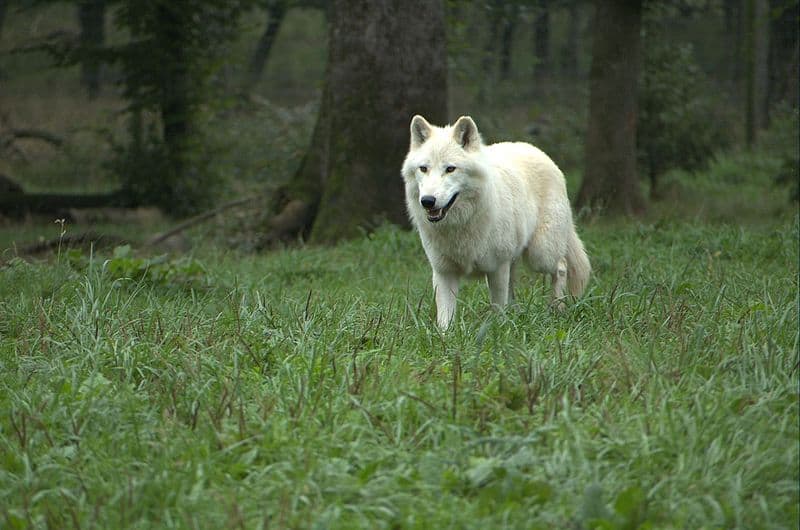
Arctic wolves survive in icy areas with an average temperature of minus 30 degrees Celsius. They have the ability to adapt to the cold thanks to their different coats, snout, shorter legs, and smaller ears to keep warm.
Arctic wolves hunt mainly Arctic hares and muskrats.
Below are amazing facts about Arctic wolves that you may not know.
1. Arctic wolves communicate through sound and tail position
The Arctic wolf’s `vocals` include howling, growling, whimpering, and barking.
Barking is used as a warning to show aggression when defending a flock or territory.
Arctic wolves can distinguish between defensive and social howls.
A defensive howl is used to keep or herd returning flock members away and keep intruders away.
Wolves often use facial expressions, ear and tail positioning to communicate.

2. Arctic wolves can tolerate complete darkness
Besides low temperatures, Arctic wolves can survive in extreme darkness.

3. Arctic wolves live in packs of 5 to 7 animals
Arctic wolves are very social animals and live in packs of 5 to 7 animals, even up to 20 animals.
Every member of the herd has a distinct position in the dominance hierarchy.
Arctic wolves run very fast.
Arctic wolves are not afraid of humans because they are rarely seen in their habitat.

4. Arctic wolves live according to the ‘one wife, one husband’ regime
Alpha males mate with dominant females and are monogamous.
Puppies will be ready to join the pack when they are 3 months old.

5. Arctic wolves have keen hearing, smell and eyesight
Arctic wolves use their keen hearing, often combined with sight and smell, to monitor their environment and identify potential prey.
According to some researchers, Arctic wolves can hear sounds with a frequency of 25kHz, up to a maximum of 80kHz.
Arctic wolves face no threat of hunting or persecution because they rarely come into contact with humans in the Arctic tundra.
Industrial development also poses a threat to Arctic wolf populations.
Reference: Animalia;








